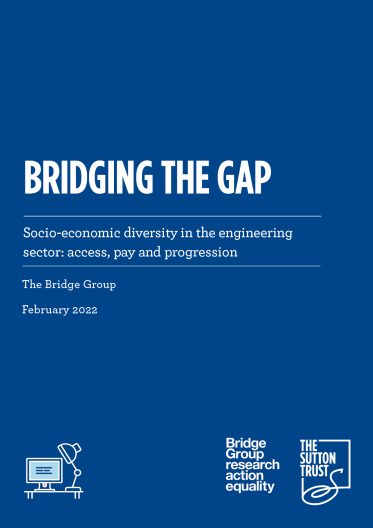Report Overview
Engineering is a large and diverse sector which is vital for the UK economy. It represents a considerable proportion of the UK workforce, with 18% of the UK working population based in engineering and at least 15% of the working population in every region in jobs that relate to the sector.
Engineering also has a relatively strong reputation for social inclusion, possessing a great variety of job roles and entry routes. However, there remain some questions about the extent to which this inclusive reputation can be supported by evidence.
This report, produced by The Bridge Group for the Sutton Trust, provides a closer look at access to and progression within the sector, focusing primarily on those in higher managerial and professional roles.
